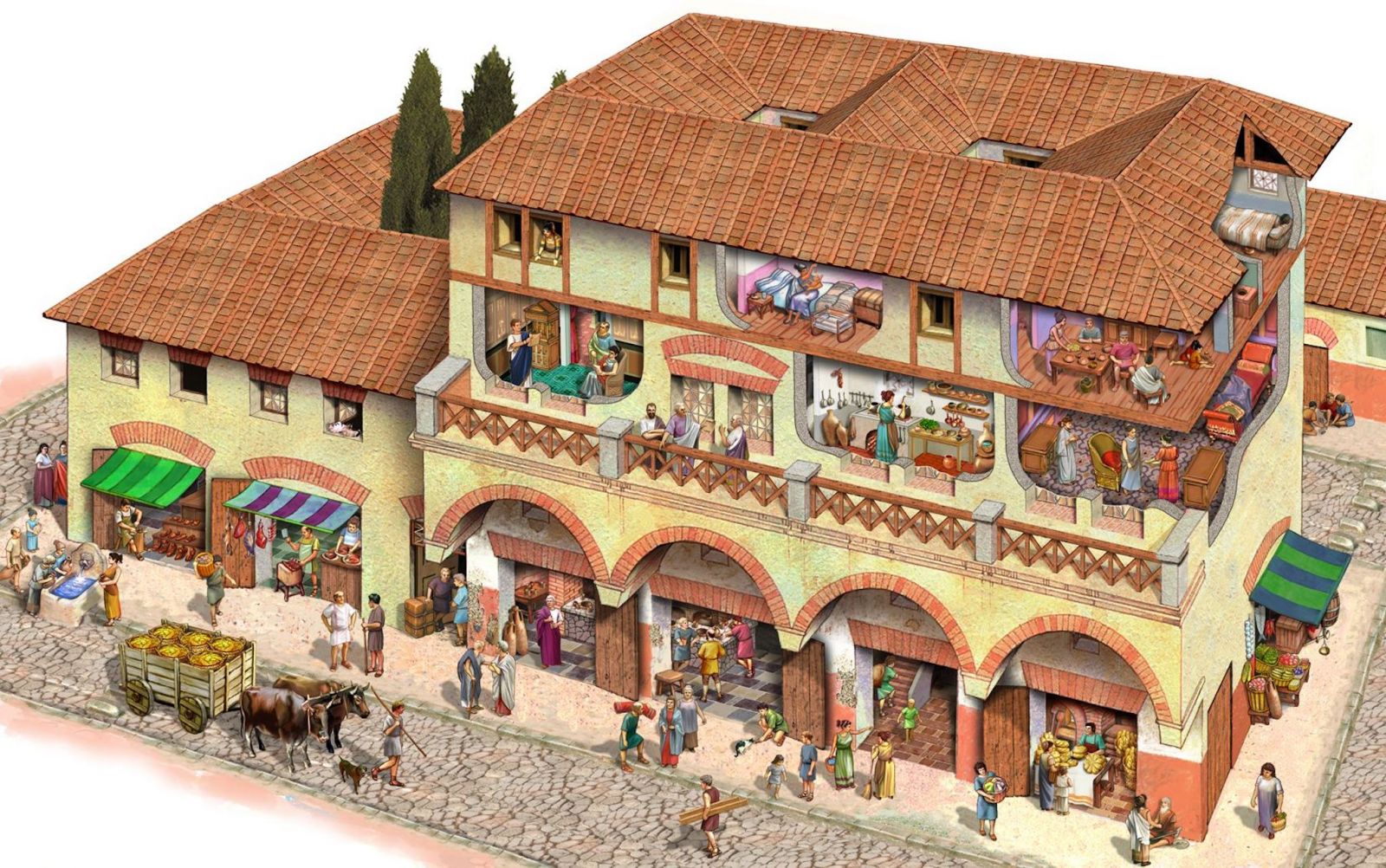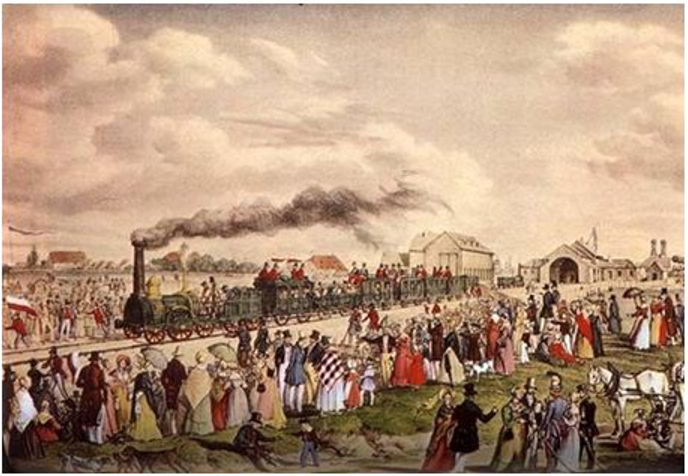
April 12, 2025
History of Estate Management in Europe an over the World
Estate Management from Ancient to Modern Period has passed through ups & downs in development and many professional changes that have increased over time
Here is an overview of the history of this industry through different periods:
I. The Ancient Roman Period: The Early Background
-Family Estate Management: In the Roman Empire, noble families owned many real estates, including large agricultural estates.
Noble families owned large estates called "villae." These properties included agricultural land, orchards, and manufacturing facilities, and were managed by families for generations. The management of the properties was often carried out by stewards or skilled slaves.
Land Law: Roman law provided a solid legal framework for land ownership and inheritance.
-Ownership and Use Rights: Rome considered land as property along with other types of property. The owner has full rights to manage and use the land.
-Rights of inheritance and transfer: The owner can transfer the ownership of the land to others through inheritance or sale.
-Public land and private land: Public land (res publicae) is the common property of the whole society, managed by the state. Private land (res privatae) is the property of individuals or families, with absolute ownership.
-Limits of use: Ancient Rome did not have the concept of "use rights" as in modern times, but land ownership was absolute and inviolable.
-Law and inheritance: Roman law clearly regulated the inheritance of land and other assets, clearly defining the heirs and their rights.
*** Terms such as "usucapio" (ownership over time) and "emphyteusis" (long-term land lease) helped shape land management and use.
During the feudal period, land belonged mainly to the royal family and the nobility. The lords and nobles were granted land by the Emperor and had the right to manage, use and collect taxes from the peasants living on their land
II. The Middle Ages to the 16th century: Basic formation
-During the Middle Ages, the feudal system prevailed in Europe. Land was divided into territories owned and managed by the lords and nobles.
The peasants who worked on this land had to pay taxes and serve the lord.
- From here, the positions of Butler and Steward began to form: The lords often hired stewards or stewards to supervise and manage activities on the territory, including collecting taxes, maintaining infrastructure and resolving disputes.
Detailed records of agricultural production, ownership and land transactions were maintained in land registers, helping to manage the land effectively.

III- 17th Century: Expansion and Reshaping
-Economic Transformation: The 17th century saw a shift from an agricultural economy to a commercial and industrial economy, especially in Europe. This led to the expansion and diversification of family assets.
-More Active Management: Families began to hire professional managers to oversee and manage their properties, especially in growing urban areas.
Laws and Regulations: The development of legal systems for land ownership and inheritance shaped the way family assets were managed.

IV- 18th-19th Century: Industrial Era
-Urban Development: The industrial revolution that began in the late 18th century led to the rapid growth of cities. This opened up new opportunities and challenges for the management of family estates on a larger scale and with more diverse types.
-Commercial Investment: Families began to invest in commercial and industrial areas, creating new sources of income from leasing and selling land.
-Spontaneous Management: In the 19th century, family estate management was largely a spontaneous activity as wealthy families managed their properties themselves without outside professional involvement. Noble and upper-class families in Europe often owned large amounts of land and real estate, and management was carried out by family members or loyal stewards.
Hereditary Property: Family estates were often passed down from generation to generation. Laws on inheritance and family estate management, especially in England and other European countries, began to shape how assets were managed and preserved across generations.

V. Early 20th Century: Professionalization and Expansion
-Professionalization of Management: In the early 20th century, the management of family estates began to professionalize with the emergence of property management companies. Large families began to hire property management professionals to optimize the use and maintenance of their properties.
-Urban Development: Urban development and the expansion of cities created new opportunities and challenges for property management. Family estates in urban areas began to be used for commercial and investment purposes, creating new sources of income for families.
VI. Mid- and Late 20th Century: Growth and Diversification
- Diversification of Investments: During the mid- and late 20th century, wealthy families began to diversify their real estate portfolios. They not only retained traditional family properties, but also invested in other types of real estate such as hotels, offices, shopping malls, and residential properties.
-Optimal Management: The development of professional real estate management companies has helped optimize the management and exploitation of assets as well as maintain the quality of real estate for a longer time.
Services such as maintenance, leasing, financial management, and real estate investment consulting have become popular, giving investors more options and at the same time, raising more considerations.

VII. 21st Century: Technology and Sustainable Development
Digital Technology: The development of information technology and the Internet has revolutionized the family real estate management industry. Technologies such as property management software, IoT, and big data analytics have helped improve management efficiency and optimize profits.
Sustainability: The trend of sustainability has become an important factor in real estate management. Families and real estate management companies have begun to adopt environmentally friendly, energy-efficient, and sustainable construction and management methods.
1827 The term “property manager” was first used.
1868 The first professional property management company was set up.
1908 Standardized lease agreements were introduced by Alfred B. Maclay (the first president of the Real Estate Board of New York (REBNY founded in 1896)
1960s Computerized systems for management came into use.
1980s Commercial property investment grew rapidly.
Present Focus is on sustainability and tech integration.

---------------------------------------------------------------------
CITYHOUSE - Estate Management
Related news
- History of Estate Management ( Family Estate ) in Viet Nam April 12, 2025
- How to Optimize Estate Management in the Long Term ? April 17, 2025
- What does the future of Faminly Estate market in Ho Chi Minh City? April 17, 2025
- CITYHOUSE: A Steady Journey – building the Foundations for the Family Estate Management in Vietnam May 13, 2025
- Decoding the Enigma: Why many Serviced Apartment- Hotels in Ho Chi Minh City Fail to Meet Profit Expectations ? June 01, 2025
Recent news
- How can family assets be safely preserved across generations? June 28, 2025
- CityHouse Apartment is proud to announce its official presence on the Agoda Flagship Store June 01, 2025
- Decoding the Enigma: Why many Serviced Apartment- Hotels in Ho Chi Minh City Fail to Meet Profit Expectations ? June 01, 2025
- CITYHOUSE: A Steady Journey – building the Foundations for the Family Estate Management in Vietnam May 13, 2025
- What does the future of Faminly Estate market in Ho Chi Minh City? April 17, 2025
